ja vesi, mukaan lukien myös käytännöllinen vedenpoisto ja ennen kaikkea kadun kunnostus, koska myös liikenteen on toimittava hyvin Katujen ja vesijohtojen työntekijät tarvitsevat helposti siirrettäviä koneita jotka voivat työskennellä kapealla sekä ahtaalla alueella tai suljetuissa tiloissa tehokkaasti.
Onneksi hydrauliikka tuli apuun, ja kömpelöt, hitaat vaijeri-kaivinkoneet jotka olivat kuoma-auto asennettu, korvattiin pian hydraulisilla kuormaus nostureilla ja kaivureilla
After the war, European cities were in ruins, needed electricity, telephone and water, including also workable drainage, and above all the streets renovation, because also traffic must work well. The roads and water pipelines workers needs easily move machines which can work in cramped area, or confined spaces efficiently.
Fortunately, hydraulics came to the aid, and clumsy, slow rollers excavators, which were fitted with a bucket, were soon replaced by hydraulic loading cranes and hydraulic excavators


Clark C1 Full hydraulic (airborne) bulldozer
------------Marshall-apu, Marshall-suunnitelma tai Euroopan palautumisohjelma oli Yhdysvaltain ensisijainen ohjelma Euroopan jälleenrakentamiseksi toisen maailmansodan jälkeen.
Ohjelma oli Yhdysvaltain ulkoministerin kenraali George C. Marshallin idea.
Suomi kieltäytyi sille tarjotusta Marshall-avusta koska neuvostoliitto painostus
Tšekkoslovakia, Puola ja Unkari olisivat halunneet ottaa Marshall-avun vastaan, mutta Neuvostoliiton painostuksesta kieltäytyivät.
 Espanjalle Marshall-apua ei tarjottu Francon hallinnon vuoksi.
Espanjalle Marshall-apua ei tarjottu Francon hallinnon vuoksi.Marshall-apu / Marshall Plan / Comecon
The Marshall Aid, the Marshall Plan, or the European Recovery Program was the United States' primary program for the reconstruction of Europe after the Second World War.
The program was the idea of General George C. Marshall, US Secretary of State.
Finland refused to takeit Marshall assistance because Soviet Union makes pressures.
Reasons and because: From 1941 until 1944, Finland aligned itself with Nazi Germany in a failed effort to regain lost territories from the Soviets.
Finland retained its independence following the war but remained subject to Soviet-imposed constraints in its domestic affairs.
Marshall assistance to Spain, was not provided, reasons for Franco recimes.
| Country | 1948/49 ($ millions) | 1949/50 ($ millions) | 1950/51 ($ millions) | Cumulative ($ millions) |
|---|---|---|---|---|
| 232 | 166 | 70 | 468 | |
| 195 | 222 | 360 | 777 | |
| 103 | 87 | 195 | 385 | |
| 1085 | 691 | 520 | 2296 | |
| 510 | 438 | 500 | 1448 | |
| 175 | 156 | 45 | 376 | |
| 6 | 22 | 15 | 43 | |
| 88 | 45 | 0 | 133 | |
| 594 | 405 | 205 | 1204 | |
| 471 | 302 | 355 | 1128 | |
| 82 | 90 | 200 | 372 | |
| 0 | 0 | 70 | 70 | |
| 39 | 48 | 260 | 347 | |
| 0 | 0 | 250 | 250 | |
| 28 | 59 | 50 | 137 | |
| 1316 | 921 | 1060 | 3297 | |
| Totals | 4,924 | 3,652 | 4,155 | 12,731 |
Ireland which received 146.2 million USD through the Marshall Plan, received 128.2 million USD as loans, and the remaining 18 million USD as grants. By 1969 the Irish Marshall Plan debt, which was still being repaid, amounted to 31 million pounds, out of a total Irish foreign debt of 50 million pounds.
The UK received 385 million USD of its Marshall Plan aid in the form of loans. Unconnected to the Marshall Plan the UK also received direct loans from the US amounting to 4.6 billion USD. The proportion of Marshall Plan loans versus Marshall Plan grants was roughly 15% to 85% for both the UK and France.

Helpommin koneilla, kuin käsityönä / Easier on machines, than by handwork


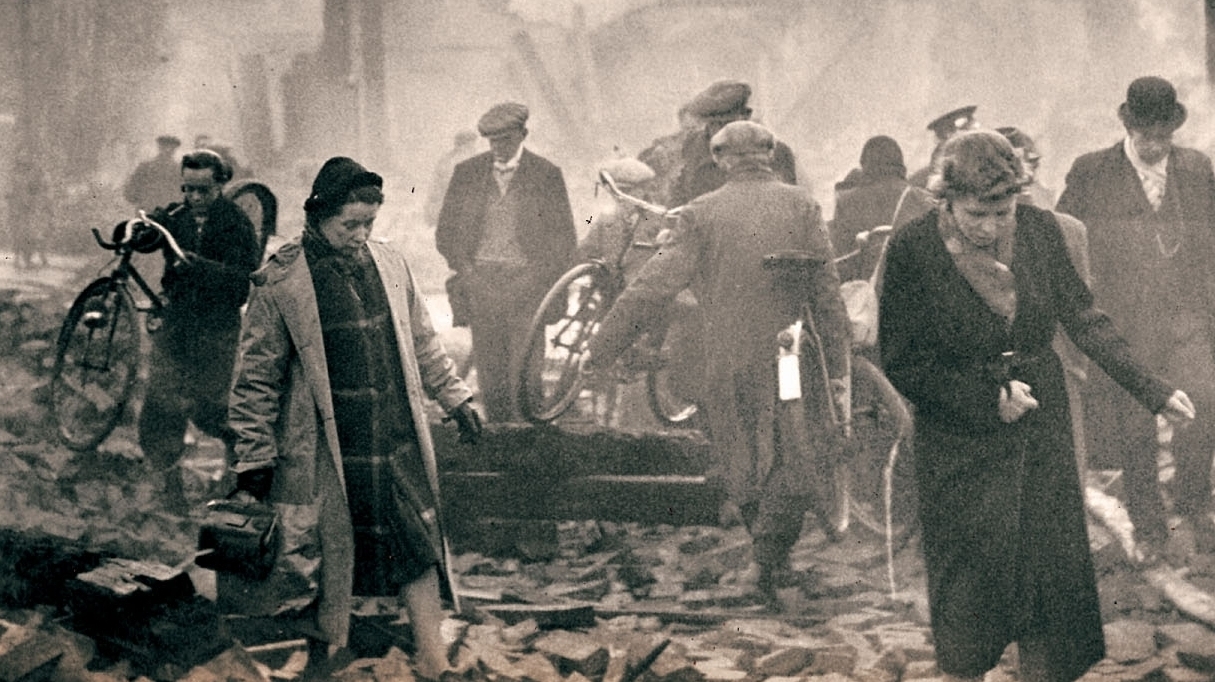
Germany, which up until the 1953 Debt agreement had to work on the assumption that all the Marshall Plan aid was to be repaid, spent its funds very carefully. Payment for Marshall Plan goods, "counterpart funds", were administered by the Reconstruction Credit Institute, which used the funds for loans inside Germany.
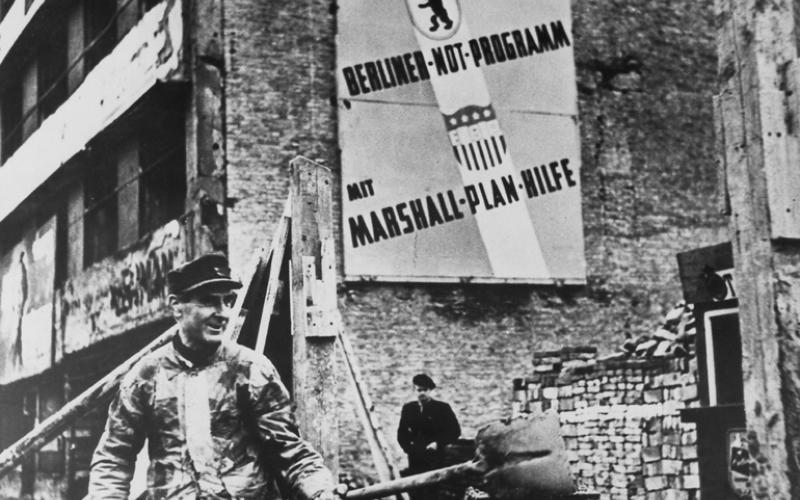
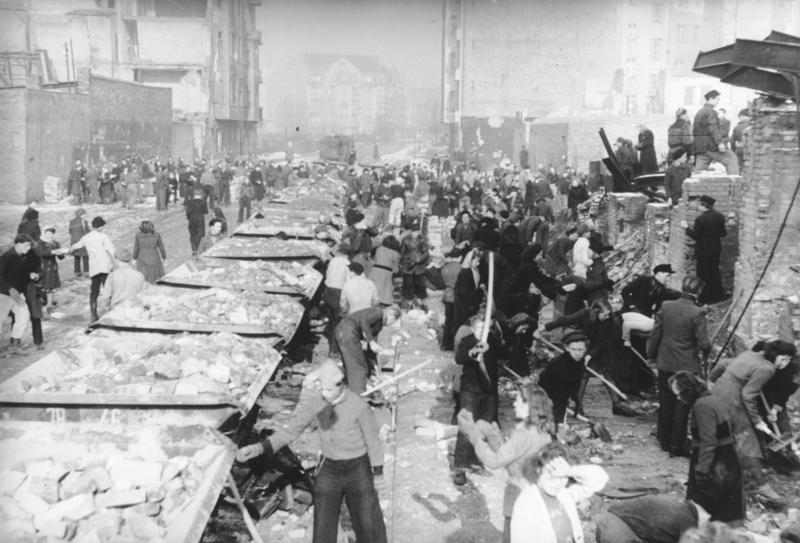
In the 1953 Debt agreement the amount of Marshall plan aid that Germany was to repay was reduced to less than 1 billion USD. This made the proportion of loans versus grants to Germany similar to that of France and the UK.
The final German loan repayment was made in 1971. Since Germany chose to repay the aid debt out of the German Federal budget, leaving the German ERP fund intact, the fund was able to continue its reconstruction work.
By 1996 it had accumulated a value of 23 billion Deutsche Mark.
---------------------------------
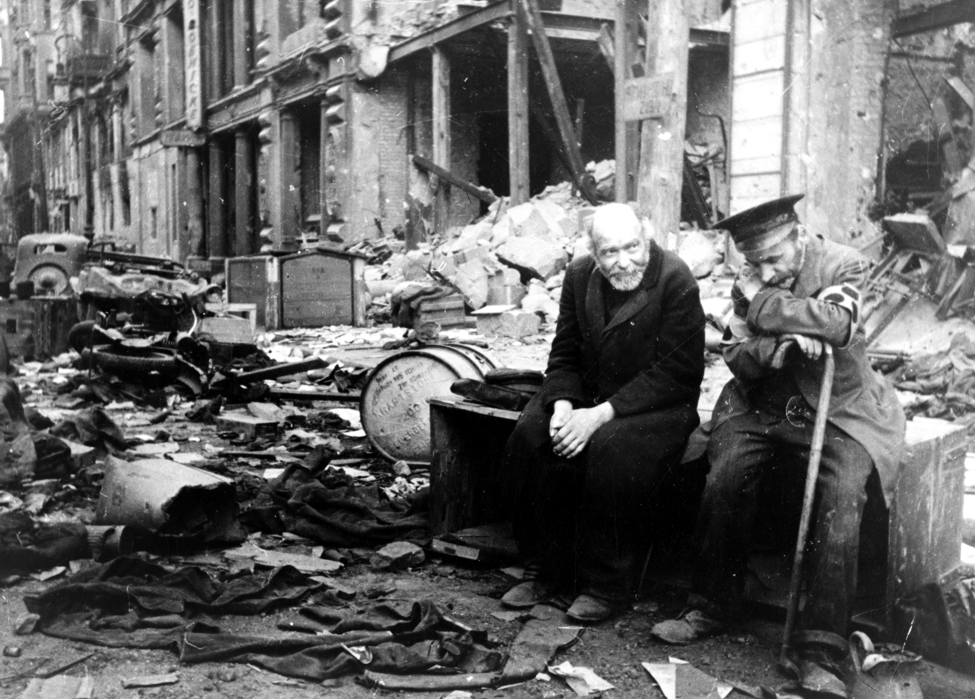

The USSR did establish COMECON as a riposte to the Marshall Plan to deliver aid for Eastern Bloc countries, but this was complicated by the Soviet efforts to manage their own recovery from the war. The members of Comecon looked to the Soviet Union for oil; in turn, they provided machinery, equipment, agricultural goods, industrial goods, and consumer goods to the Soviet Union.
Economic recovery in the East was much slower than in the West, resulting in the formation of the shortage economies and a gap in wealth between East and West. Finland, which USSR forbade to join the Marshall Plan and which was required to give large reparations to the USSR, saw its economy recover to pre-war levels in 1947.
France, which received billions of dollars through the Marshall Plan, similarly saw its average income per person return to almost pre-war level by 1949.
By mid-1948 industrial production in Poland, Hungary, Bulgaria, and Czechoslovakia had recovered to a level somewhat above pre-war level.
----------
While the western portion of the Soviet Union had been as badly affected as any part of the world by the war, the eastern portion of the country was largely untouched and had seen a rapid industrialization during the war.
The Soviets also imposed large reparations payments on the Axis allies that were in its sphere of influence. Austria, Finland, Hungary, Romania, and especially East Germany were forced to pay vast sums and ship large amounts of supplies to the USSR.
These reparation payments meant the Soviet Union itself received about the same as 16 European countries received in total from Marshall Plan aid.
----------
In accordance with the agreements with the USSR, shipment of dismantled German industrial installations from the west began on March 31, 1946. Under the terms of the agreement the Soviet Union would in return ship raw materials such as food and timber to the western zones.
In view of the Soviet failure to do so, the western zones halted the shipments east, ostensibly on a temporary basis, although they were never resumed. It was later shown that the main reason for halting shipments east was not the behavior of the USSR but rather the recalcitrant behavior of France.
Examples of material received by the USSR were equipment from the Kugel-Fischer ballbearing plant at Schweinfurt, the Daimler-Benz underground aircraft-engine plant at Obrigheim, the Deschimag shipyards at Bremen-Weser, and the Gendorf powerplant.




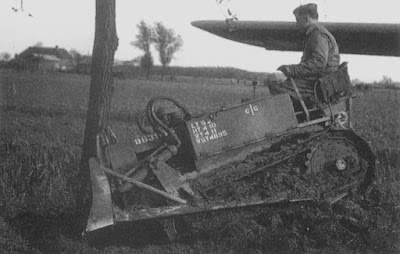
We are a group of volunteers and opening a new scheme in our community.
VastaaPoistaYour web site offered us with valuable info to work on. You have done an impressive
job and our whole community will be thankful to
you.
Simply desire to say your article is as amazing.
VastaaPoistaThe clearness in your post is just cool and i could assume you're an expert on this subject.
Well with your permission let me to grab your feed to keep updated with forthcoming post.
Thanks a million and please continue the enjoyable work.
It's an remarkable post in support of all the online viewers; they will
VastaaPoistaget benefit from it I am sure.
Thanks on your marvelous posting! I actually enjoyed reading it, you might be a great author.I will ensure that I bookmark your blog and will come back down the road.
VastaaPoistaI want to encourage you to definitely continue your
great job, have a nice holiday weekend!
My partner and I stumbled over here by a different web page and thought I may as
VastaaPoistawell check things out. I like what I see so now i'm following you.
Look forward to going over your web page yet again.
This post is genuinely a pleasant one it assists new
VastaaPoistainternet visitors, who are wishing for blogging.
Thank you for sharing your thoughts. I really appreciate
VastaaPoistayour efforts and I will be waiting for your further write
ups thank you once again.